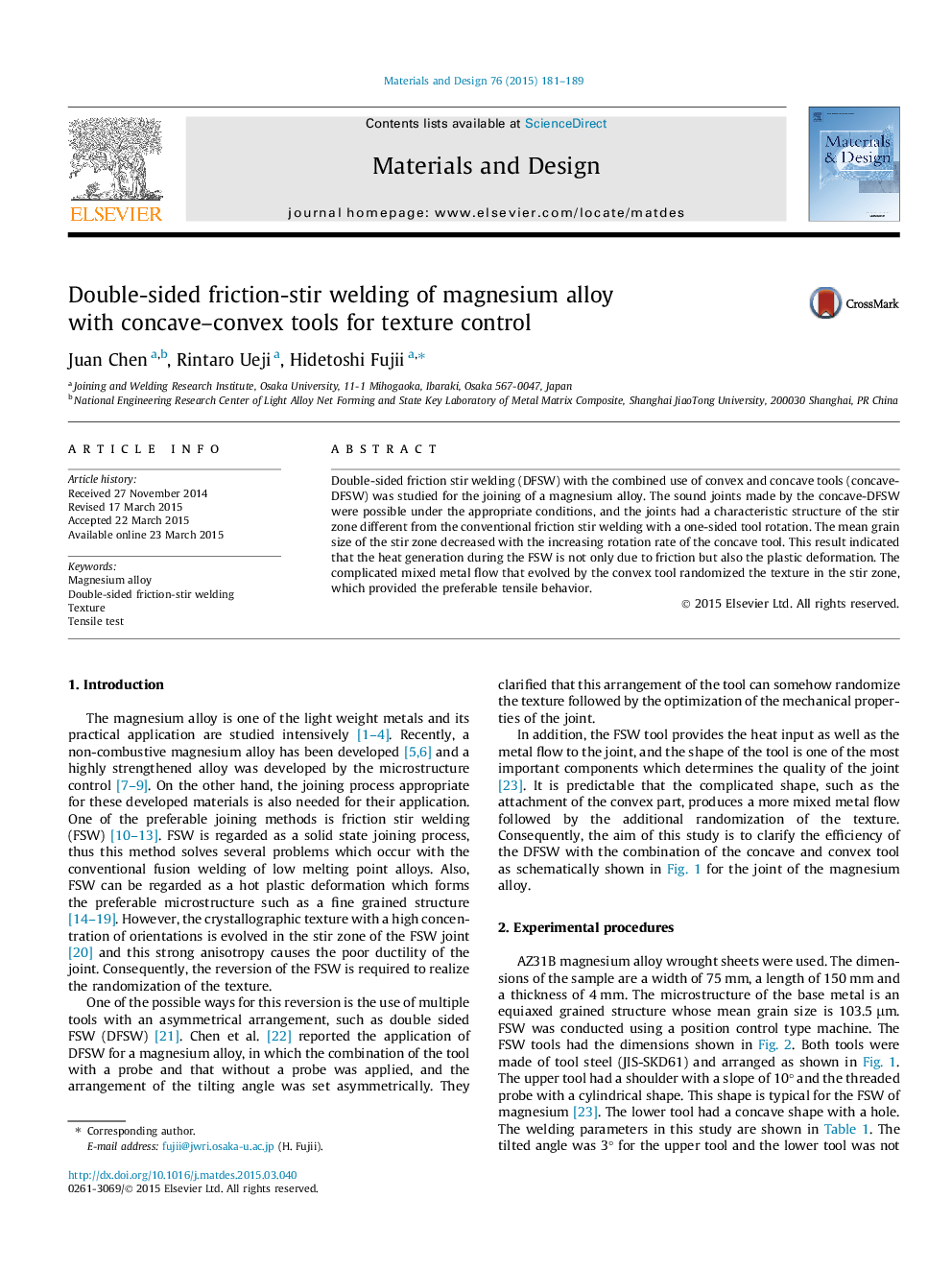| کد مقاله | کد نشریه | سال انتشار | مقاله انگلیسی | نسخه تمام متن |
|---|---|---|---|---|
| 828617 | 1470321 | 2015 | 9 صفحه PDF | دانلود رایگان |
• Double-sided friction stir welding (DFSW) with convex and concave tools was studied for welding magnesium alloy.
• The mean grain size of stir zone decreased with increasing rotation rate of concave tool.
• The heat generation during FSW is not only due to friction but also plastic deformation.
• The DFSW with concave lower tool provided randomized texture due to its asymmetrical geometry and more heat generation.
Double-sided friction stir welding (DFSW) with the combined use of convex and concave tools (concave-DFSW) was studied for the joining of a magnesium alloy. The sound joints made by the concave-DFSW were possible under the appropriate conditions, and the joints had a characteristic structure of the stir zone different from the conventional friction stir welding with a one-sided tool rotation. The mean grain size of the stir zone decreased with the increasing rotation rate of the concave tool. This result indicated that the heat generation during the FSW is not only due to friction but also the plastic deformation. The complicated mixed metal flow that evolved by the convex tool randomized the texture in the stir zone, which provided the preferable tensile behavior.
Double-sided friction stir welding (DFSW) with the combined use of convex and concave tools (concave-DFSW) was studied for welding magnesium alloy. The results indicated that the heat generation during the FSW is not only due to friction but also the plastic deformation. The complicated mixed metal flow that evolved by the convex tool randomized the texture in the stir zone, which provided the preferable tensile behavior.Figure optionsDownload as PowerPoint slide
Journal: Materials & Design - Volume 76, 5 July 2015, Pages 181–189
